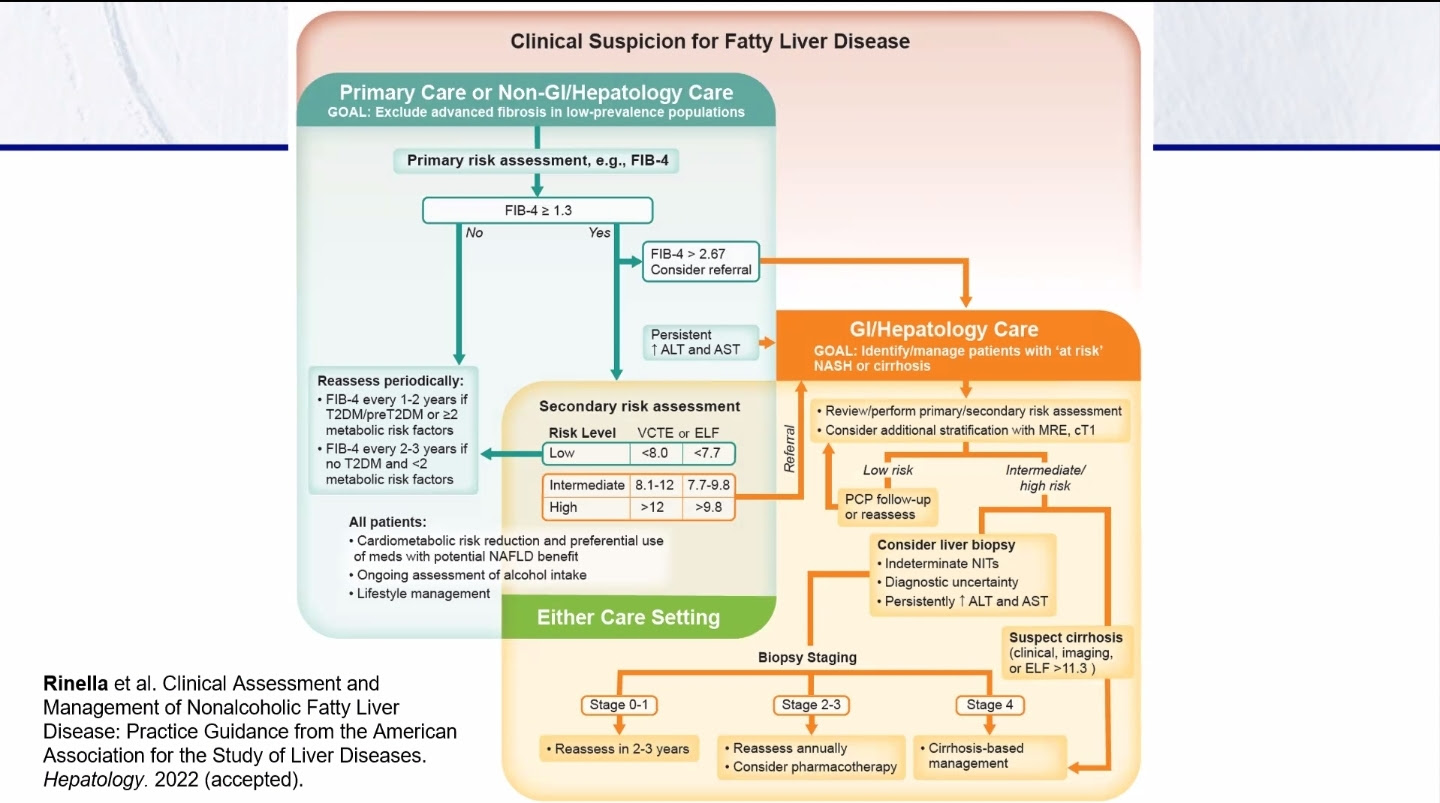The new guidance for managing NAFLD/NASH has been officially published. This is the official guidance by the American Association for the Study of Liver Disease (AASLD) and it is intended to provide primary care and other providers with the information they need to provide care for their patients. A key element for us is that it supports early intervention for high risk patients and provides clear guidance for how to risk stratify and to determine who needs referral to a specialist.
Here is a link to the official document
A long standing frustration for patients has been to learn of liver disease only after it had advanced to a dangerous condition. This is the first step toward better patient care. Now we have to get the medical community to actually implement this program. That will not be an easy process.
This strategy begins with a calculator called FIB-4. It is very easy and uses values that most people have in their routine blood tests. They are age, ALT, AST, and platelet count.
Here is a link to more information and the calculator so you can calculate it yoursef
My story illustrates why we have advocated use of this test for several years now.

This is a chart of my personal results over the years. You can see that had my docs used this I would have been flagged as at risk in 1999. I would have been referred to a specialist by 2006. Since asymptomatic fatty liver was ignored at that time it wasn't until 2010 that I learned I could have a problem following gall bladder surgery. Even then I wasn't referred to a specialist and I went through the diagnosis wringer until 2015 when I was finally diagnosed as a stage 4 NASH cirrhotic. I've tracked my FIB 4 since that time and I am a successful patient so far as my fibrosis has improved to an F2/F3. This isn't a perfect test as it just provides a probability but as part of a diagnostic strategy it points in the right direction most of the time, particularly if you track it over the years.
Since you are on my distribution you probably have some kind of diagnosis already, but I encourage you to calculate your own score and pass this information to anyone you know who is at risk. That is a lot of people as it includes anyone who is obese, has type 2 or pre diabetes, or any of the metabolic conditions like high triglycerides. The people who are at risk need to understand that and everyone should discuss it with their doctors.
Also, click on the flowchart below, print it, and take that with you to your doc. This looks a little complicated but any doc can follow this flowchart. It isn't enough that guidance has been published. It has to be used and as patients our questions will encourage our care team to learn about the process.







